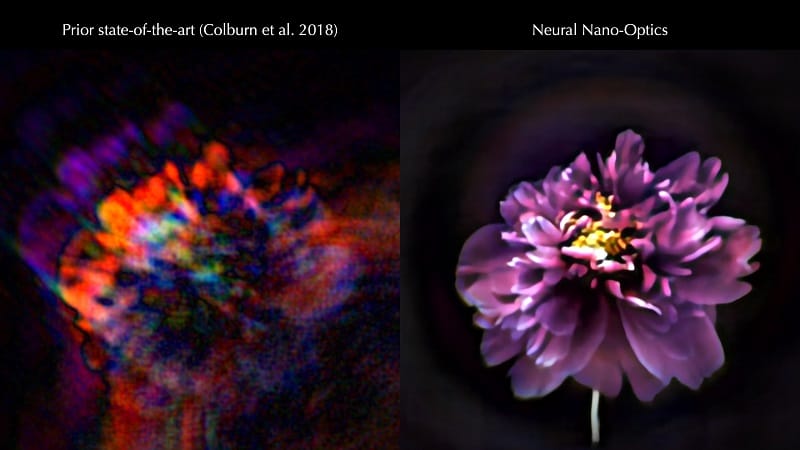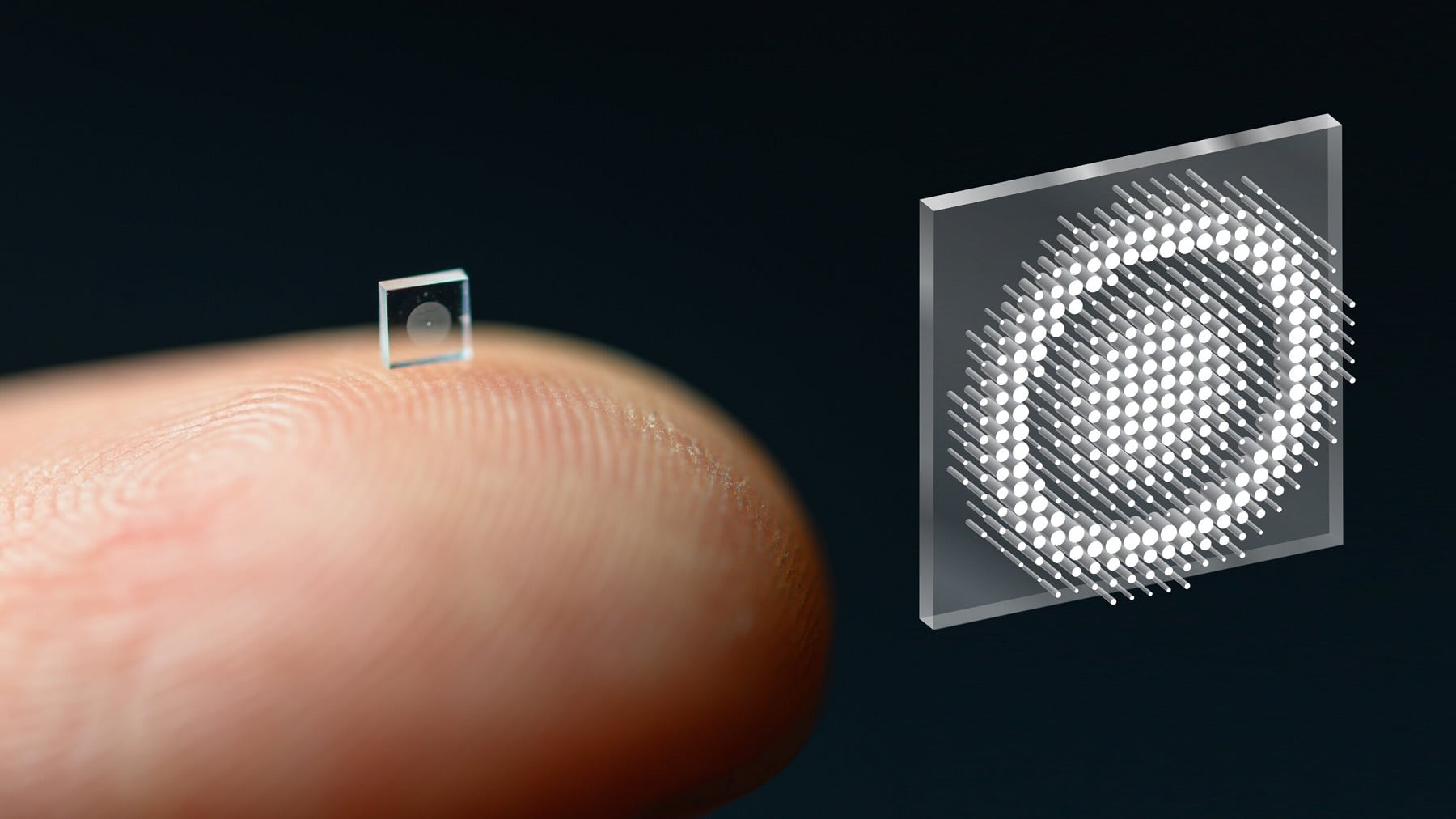Researchers at Princeton University and Washington University have succeeded in creating a camera so small that its size can be compared to the size of a grain of salt. However, it can take pictures with quality equal to that of a device hundreds of thousands of times larger.
This miniature camera could be of great use in medicine, to perform less invasive auscultation procedures or to give precision robots more advanced senses. A small machine capable of capturing high-quality images … The challenge looks rather classic, but it is not fully resolved yet. In fact, it presents scientists with great problems affecting the basic laws of optics.
In “conventional” cameras, optical elements, such as lenses, are assembled to collect light in a scene and correct its refraction so that a consistent image is obtained. This actually dictates a certain size, if only to fit these lenses. The second limitation is the focal length. The so-called focal length is the distance between the optical lens and the camera sensor. They can be larger or smaller, but they are not infinitely reducible, otherwise we get an image with a lot of chromatic aberrations.
Metasurfaces for changing optics
To get around these size limitations, the team of scientists used so-called “metasurfaces”. Metasurfaces, according to this CNRS . profile, we are Photonic elements composed of nano-elements (…) which make it possible to avoid long propagation by introducing abrupt changes along the optical path in phase, amplitude and/or polarization on the thickness scale of the order wavelength In other words, the method of “playing” with the wavelength of light is not the same, and thus allows scientists to somewhat cancel the above limits.
Concretely, the device takes the form of millions of tiny optical “antennas”, each uniquely configured. All of these antennas will receive and process the different wavelengths to resend a coherent image at the end of the trip like a camera.
However, the use of metasurfaces to create a miniature camera was not enough. In fact, this is not the first attempt of its kind. As it is, this method poses a lot of visual difficulties, and the image obtained by previous attempts in this field contained a lot of distortions and chromatic aberrations, which made its use difficult.

image reconstruction algorithm
To improve the image, Princeton scientists worked on the upstream and downstream process of producing the images. Upstream, it comes to carrying out the complex task of configuring each of the millions of optical antennas individually. Indeed, given their number, but also the complexity of their interaction with light, the challenge is great. So one researcher, Shane Colborne, has developed a computer model that is able to automate tuning antennas with enough precision to optimize them properly.
Downstream To produce this image, the scientists used a reconstruction algorithm. This nano-optical neural network, capable of recognizing image defects and modifying them according to the “learned” data, made it possible to obtain the desired quality. ” We offer an image quality comparable to a massive commercial six-element lens, even though our design size is 550,000 times smaller. “They congratulate each other their report.
In addition, the material used, silicon nitride, is similar to glass, and complies with standard semiconductor manufacturing methods used in computer chips. In other words, the scientists say that large-scale production is possible at a lower cost than conventional camera lenses. They are still looking to improve their discovery to allow, for example, the discovery of objects or the perception of certain elements. Additional capabilities that could be useful in the fields of medicine and robotics. In the meantime, they are already imagining that their invention could completely change the way things are designed. What if any surface could become a camera?
Source : Princeton University

“Professional food nerd. Internet scholar. Typical bacon buff. Passionate creator.”





